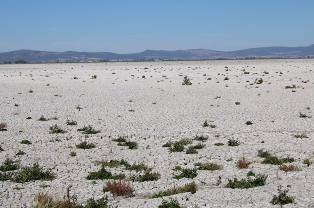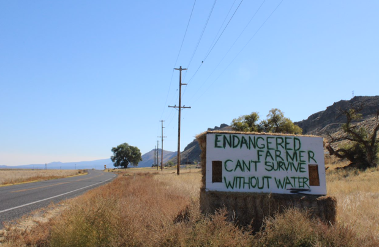The overlap between environmental science and social justice are rare, but it has been around since at least the early 1990’s and is becoming more well-known today. The framework of Environmental Justice was popularized by Robert Bullard when his wife, a lawyer, asked him to help her with a case where he was mapping all the landfills in the state of Texas and cross reference the demographics of the people who lived there. Landfills are not the most pleasant places to live next to, especially if you never had the opportunity to choose otherwise. Bullard found that even though Houston has a 75% white population, every single city-owned landfill was built in predominantly black neighborhoods. The environmental hazards of landfills, their emissions and contaminated effluent, were systematically placed in communities that had been – and continue to be – disenfranchised citizens who lacked political power. Black people were forced to endure a disproportionate burden of the environmental hazards, and procedural justice was lacking in the decision making process that created these realities. Unfortunately, this is not a unique situation to Houston, or Texas, because this pattern continues today.
Environmental justice is an umbrella term that we cannot fully unpack in a blogpost or a single podcast, but it is fundamentally about the injustices of environmental hazards being forced upon disadvantaged communities who had little to no role in creating those hazards. This is not a United States-specific issue although we do focus on state-side issues in this episode. In fact, some of the most egregious examples occur in smaller and lesser known countries (see our episode with Michael Johnson, where his motivation for pursuing marine sciences in graduate school is because the islands of micronesia where he grew up are literally being submerged by the rising seas of global warming). The issues we discuss are multifaceted and can seem impossible to fix. But before we can fix the issues we need to really understand the socio-political-economic ecosystem that has placed us exactly where we are today.
To begin to discuss all of this, we have Chris Hughbanks who is a graduate student at Oregon State and one of the Vice Presidents of the local Linn-Benton NAACP branch and a member of their Environmental and Climate Justice committee (Disclaimer: Adrian is also a branch member and part of the committee). We begin the discussion with a flood in Chris’ hometown of Detroit. Chris describes how they never really had floods because when precipitation occurs it’s usually either not that much rain or cold enough for it to snow instead. Because it hardly rains that much, very few people have flood insurance. But that pesky climate change is making temperatures warmer and precipitation events more intense than ever before causing flooding to occur in 2014, 2016, 2019, and 2020. As you might guess, the effects of this natural disaster were not equally shared by all citizens of Detroit. We discuss the overlap between housing discrimination and flood areas, how the recovery effort left so many out to [not] dry.
We end the episode with ways to get involved at the local level. First, consider learning more about the Linn-Benton NAACP branch, and the initiatives they focus on to empower local communities. Vote, vote, vote, and vote. Make sure you’re registered, and everyone else you know is registered to vote. And recognize these problems are generations in the making, and it will take just as long to fully rectify them. Finally, I am reminded of an episode interviewing millennial writers about what it means to be born when global warming was a niche research topic, but to come of age when climate change has become a global catastrophe. They rightfully point out that there are a myriad of possibilities for human salvation and sacrifice for every tenth of a degree between 1.5 and 3.0°C of warming that is predicted by the most recent 6th edition of the IPCC report. As grim as our future seems, what an awesome task for our generations to embark upon to try and “create a polity and economy that actually treats everybody with dignity, I cannot think of a more meaningful way to spend a human life.”
If you missed the show, you can listen to this episode on the podcast feed!
Additional Reading & Podcast Notes
The Detroit Flood – We mentioned the NPR article reporting that 40% of people living in Detroit experienced flooding, how black neighborhoods were at higher risk to flooding, and that renters (who are disproportionately black) were nearly twice as likely to experience flooding compared to those who owned their homes. We also mentioned a map of Detroit, showing which areas are more at risk of flooding. Another local article described how abnormal that summer in Detroit and the surrounding areas were compared to other years.
We listed a number of Environmental Justice links that include:
- Dumping in Dixie, the 1990 book written by Robert Bullard which is considered essential reading for many law school courses on environmental justice.
- We listed the organizing principles of the modern environmental justice movement, first codified in 1991 at the First National People of Color Environmental Leadership Summit
- A story near Los Angeles where mixed-use city zoning laws allowed industrial businesses to operate near residential areas, causing soil lead pollution that was unknown until Yvette Cabrera wrote her own grant to study the issue. Read her story in Grist: Ghost of Polluter’s Past that describes the immense efforts she and researchers had to go through to map soil lead contamination, and how the community has used that information to generate positive change for the community.
- Environmental [in]justice afflicts the global south as well, where a majority of forest loss since the 1960’s has occurred in the tropical regions of the world.
Adrian mentioned a number of podcasts for further listening:
- Two Voltz podcasts about recent increased traffic fatalities and how to get cars out of downtowns.
- Two past Inspiration Dissemination episodes with Holly Horan on maternal infant stress in Puerto Rico and her experience conducting research after Hurricane Maria, and Michael Johnson who one of his motivation to go to graduate school was because where he grew up – Micronesia – has been feeling the rising seas of climate change long before other countries.
- A deep investigative journalism podcast called Floodlines about the events leading up to Hurricane Katrina in 2005 and what happened after (or, what should have happened).
- If all this hurricane and flooding talk has got you down, consider that heat kills more people in the US than floods, hurricanes, or tornadoes according to the National Weather Service.
We also discussed the 2021 heat dome in the Pacific Northwest. This led to Oregon passing some of the strongest protections for heat for farmworkers (and others working outside). Consider reading a summary of wildfire effects on outdoor workers, and a new proposal in Oregon to pay farmworkers overtime (this proposal was recently passed in March of 2022). Related to farmworkers, Adrian mentioned the 2013 Southern Poverty Law Center’s analysis of guest visa worker programs titled Close to Slavery: Guestworker programs in the United States.
We returned to the fact that housing is central to so many injustices for generations. The Color of Law: A forgotten history of how our government segregated America by Richard Rothstein is a historical analysis of the laws and policies that shaped today’s housing patterns. One example Rothstein often cites is the construction of freeways purposefully routed through black communities; recently one developer accidentally said the quiet part out loud in explaining where a gas pipeline was routed because they choose “the path of least resistance“. We also mentioned that in 2019 and in 2020, Corvallis has ~37% of its residents being rent burdened (meaning households spend more than 50% of their income on rent), which is the worst city in the state over both years. You can also read about a California Delta assessment that focuses on agricultural shifts in the region due to land erosion and flooding, but they mention how current flood risk is tied to historical redlining.















